
CURATOR’s EYE
Put the art next to the pillow.
Suivez TRiCERA sur Instagram et découvrez nos artistes créatifs.
5% et livraison gratuite pour le 1er achat
FIRSTART5
10%OFF le 2e achat après le 1er achat!
Bienvenue à TRiCERA
Hi there! Nous sommes heureux de vous accueillir ici 🎉
Pourriez-vous vous décrire ?
Invité
Let's say you are strolling through the collection at a museum. Are you the type of person who takes time to look at the portraits, or are you the type of person who, like the author, walks quickly through them? I find this area rather uncomfortable. The portraits on the walls reminded me of the walls of the principal's office where I used to be scolded for hours for my innocent misbehavior. Nevertheless, there are certain works that fascinate me as much as the bitter memories, and I can't help but stop to admire the timeless narratives of the models and artists, and the sense of presence that cannot be ignored.
It seems that I am not the only one who finds the portraits of ordinary people even more interesting and dramatic. For example, "The Girl with the Pearl Earring," a masterpiece by Dutch Golden Age painter Johannes Vermeer, inspired Tracy Chevalier to write a novel of the same title that sold over 5 million copies and was even made into a movie. Just as the face of the President of the United States carved into Mount Rushmore is fearless but inaccessible, it is somewhat rare to be charmed by the archetypal privileged class, no matter how beautifully it is depicted.
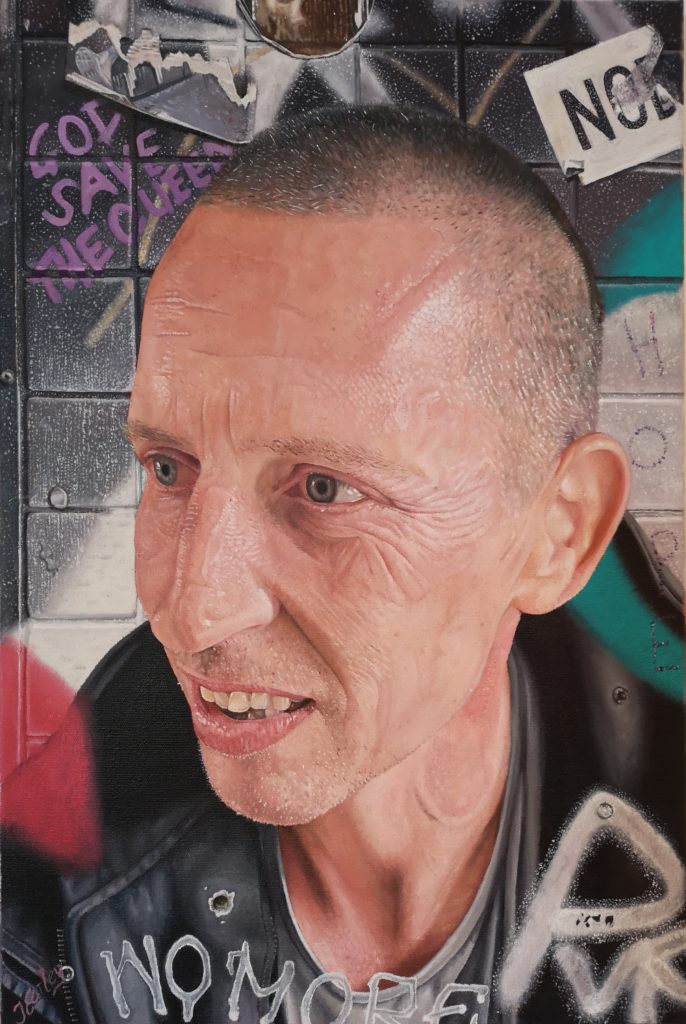
A good portrait should have the power to lure us into a strange triangle between the model, the artist and the viewer. We don't have to be afraid of feeling attached to it. Some of today's portraits in TRiCERA depict ordinary people, especially those from a distorted social dimension. Are we ready to dive into that distorted dimension?Please fasten your seatbelts. This will be a very private and emotional flight.
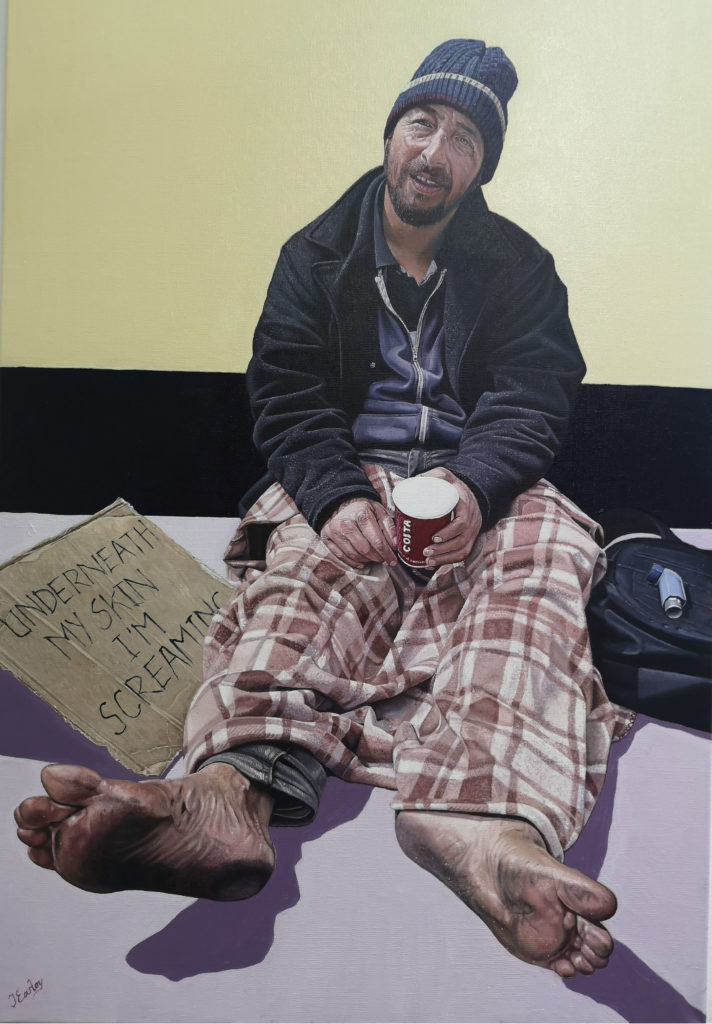
British-born James Earley is one of the most promising hyperrealist painters working today, having won first prize at the London Biennial 2019. He says he often represents troubled figures to "raise awareness of issues like homelessness, mental health, and war. Surprisingly, his unconventional models give a positive impression of humanity and serenity, far more than the negativity of sadness and exhaustion.
The cry that reaches the so-called "ordinary people" is that there is no difference between these "unfortunate people" and us. We all have problems in life that we want to hide. But in their case, they are only exposed because they don't have a social costume to cover them. The soles of this man's feet, which attract the viewer's attention, symbolize the hardships and stains of life that we are trying so hard to cover up, and evoke in the viewer the awkwardness of being exposed to them.
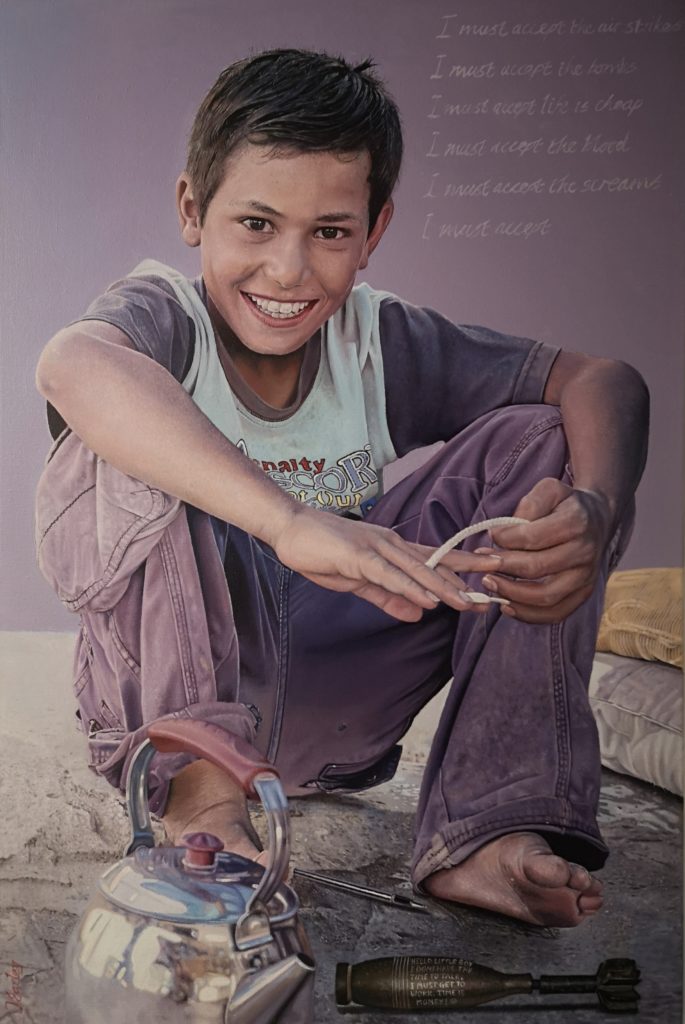
When I moved to Vancouver, Canada, known as the most livable city in the world, in 2015, the sight of homeless people saturating the streets was a shock to me. After all, just one block away from a street that bustles with tourists day and night is the largest homeless area in the world. Living among them, I did not suffer any direct harm, but the indirect damage was great. Many of them were young men and women of the same age, and my heart ached every time I walked past them.
Paying rent, food, and expensive tuition fees from my modest savings and part-time job, my life in downtown Tokyo became more and more difficult by the day. I was barely making ends meet when a Canadian friend of the same age told me about her secret past. She told me that she had been in the same situation as me, but had fallen and had been homeless for several months and then stayed in a shelter. To the outside world, she was beautiful and cheerful, but she hid it well under her disguise. After that day, homelessness was no longer someone else's problem. This realization and fear became a driving force, but ultimately led me to leave downtown.
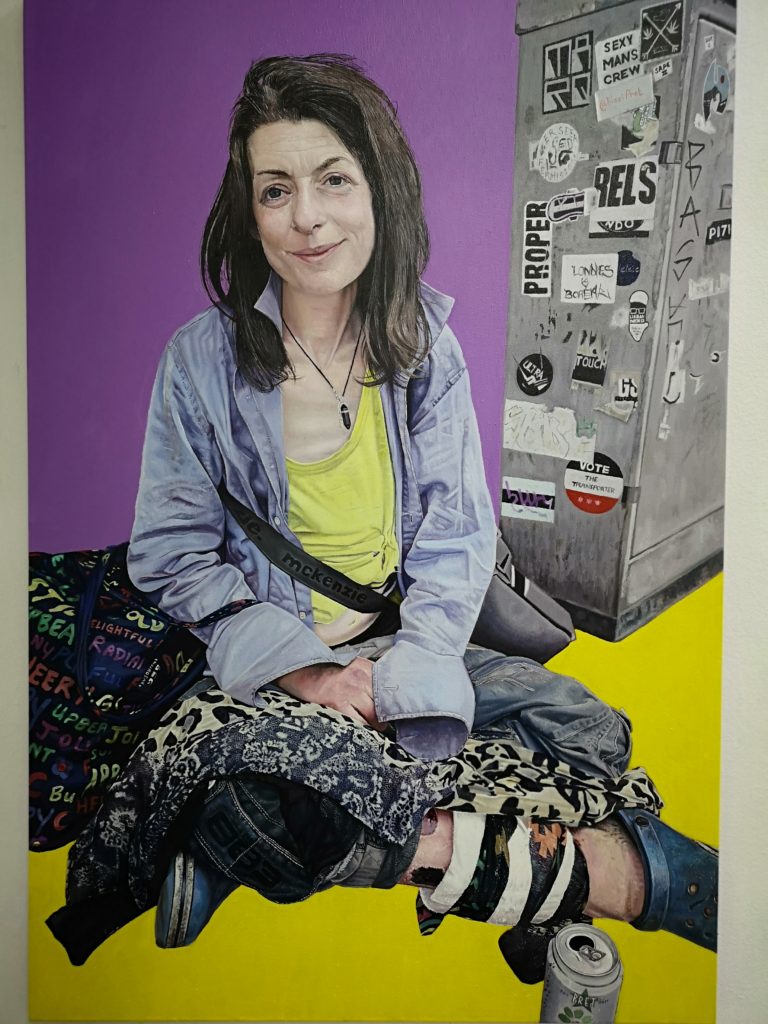
One day, after years of escaping from my miserable reality, a homeless man from Montreal named Jean-Marc asked me to go to that store and buy this for him. Usually he would just ask me for some change, but he was friendly and about the same age as me, so I took him up on his offer. While we walked a few blocks together, he happily told me his personal story. A few nights later, I saw him again on the street and we chatted a bit. I couldn't do much for him, but sometimes I still wonder how he is doing.
I was moved to tears when I saw Jean-Marc's embarrassed smile in one of Early's intimate portraits. I guess the artist must have not only a heart full of empathy and compassion, but also the strength to share and bear their sorrow. It is not charity that can bring out the genuine smiles seen in this painting, but his unvarnished persona. Early perpetuates the momentary joys of reality as art, lighting up lives that are otherwise overlooked.
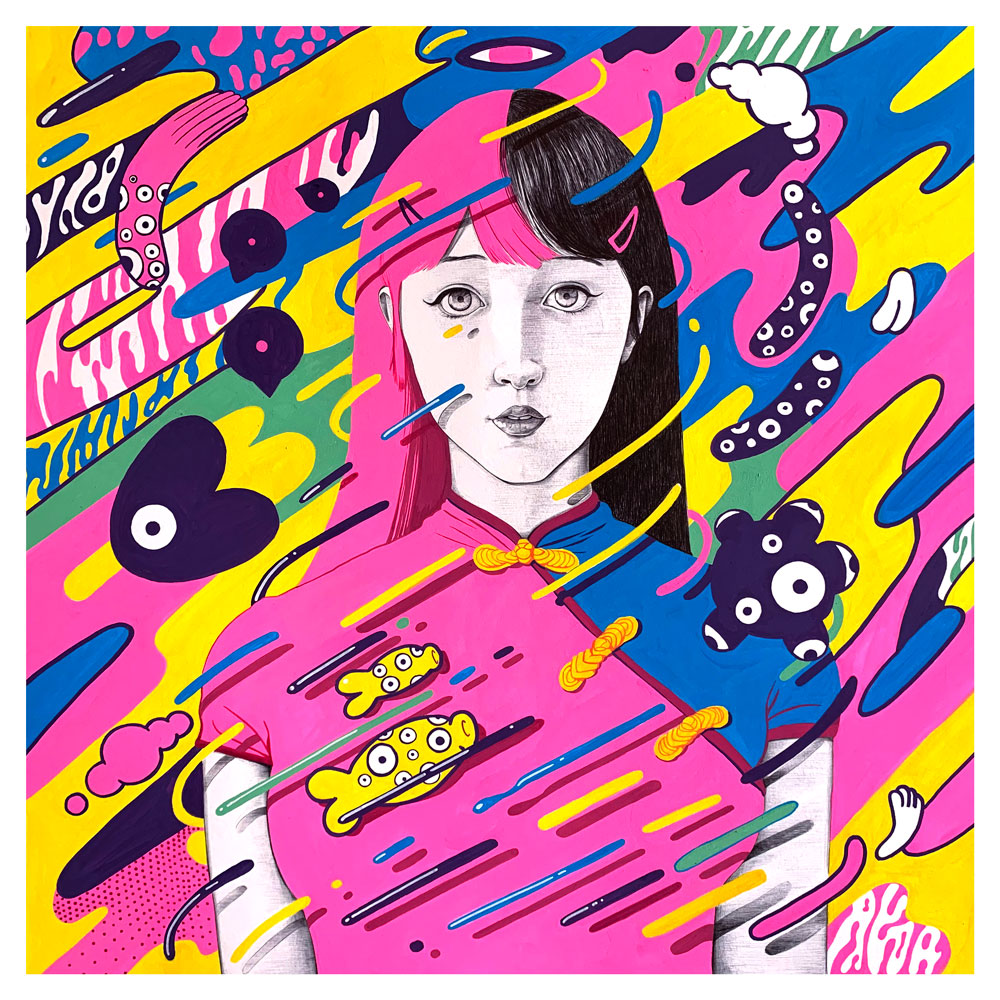
In the younger generation, the pressure to be unique (like others) is increasing. They struggle to find themselves between the innate preciousness of their individuality and the socially endorsed popularity of their personality. Rafa Mata aptly points out this contradiction in his art and words.
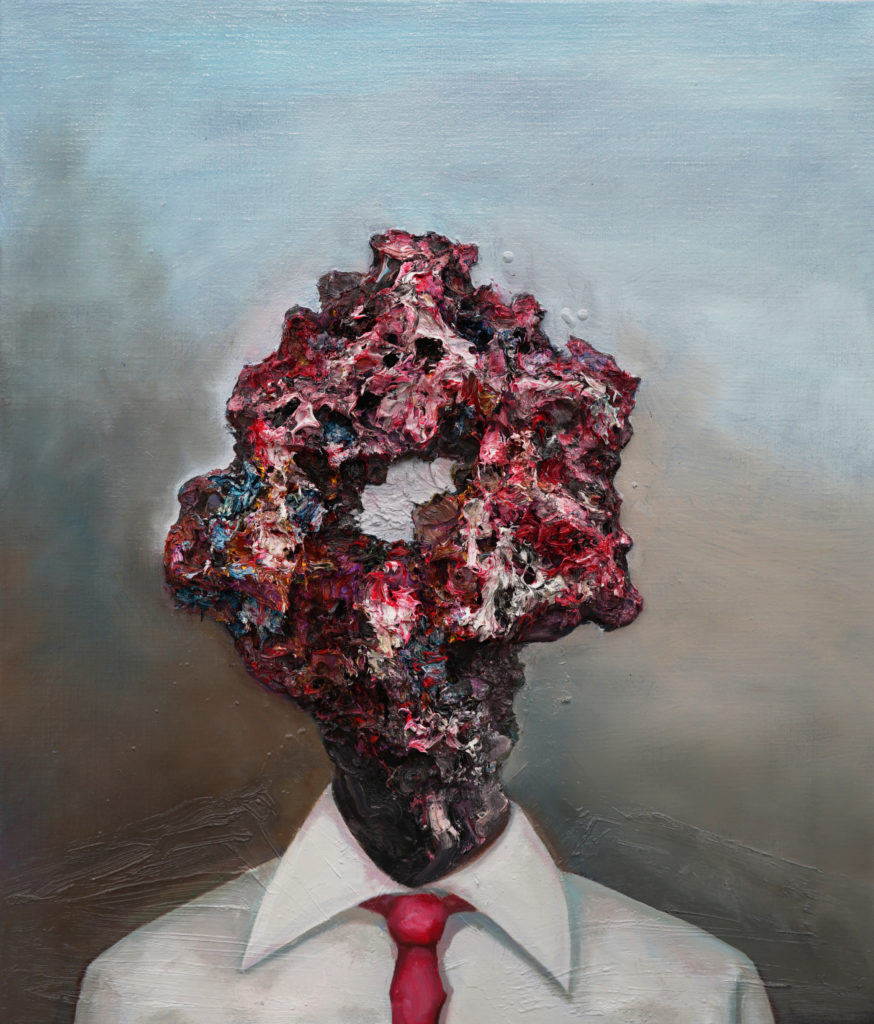
Zeng Chao depicts the ideological conflict in contemporary Chinese society as a portrait of a person. He says that one group is influenced by Chinese socialism, while the other is influenced by Taoism, an ancient Chinese philosophy. He dresses the figures in symbolic socialist clothing and replaces their heads with his Taoist-derived motif, the "temporary mountain stone. The contrast of the dynamic brushwork with oil paint is astonishing.
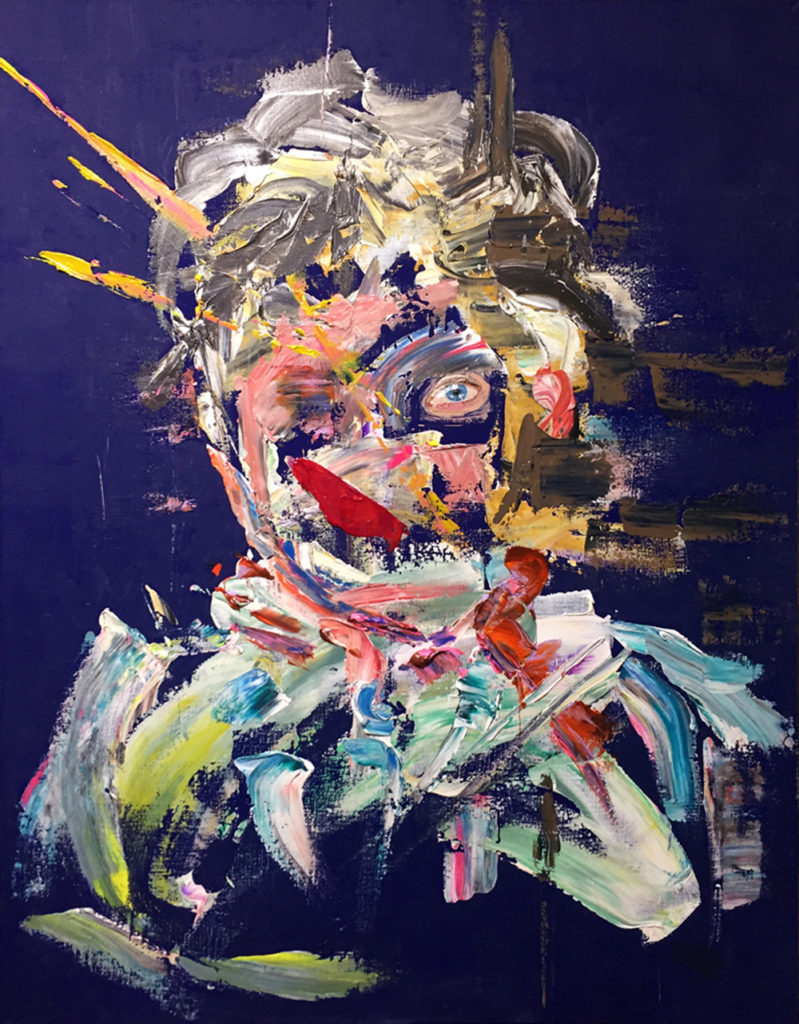
What the portrait represents may not be as easy to understand as, for example, a landscape painting. However, because of this ambiguity, we are free to read between the lines. What do we feel as viewers? How did the painter interpret the model? And what do we see in the eyes of the model? It is good to enjoy portraits from a personal and emotional point of view.
A colleague of mine wrote another article about portraits. "Why Do People Paint Faces? He also analyzes many other works from a technical point of view. For those who are interested, don't forget to subscribe to the ArtClip newsletter.
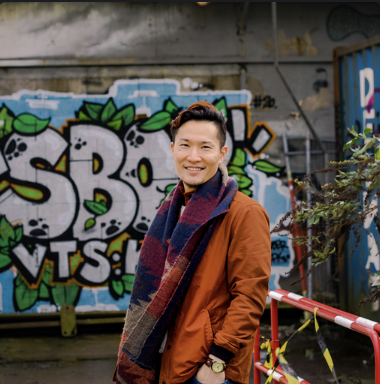
Écrivain
Isaac Ishimatsu
Let's say you are strolling through the collection at a museum. Are you the type of person who takes time to look at the portraits, or are you the type of person who, like the author, walks quickly through them? I find this area rather uncomfortable. The portraits on the walls reminded me of the walls of the principal's office where I used to be scolded for hours for my innocent misbehavior. Nevertheless, there are certain works that fascinate me as much as the bitter memories, and I can't help but stop to admire the timeless narratives of the models and artists, and the sense of presence that cannot be ignored.
It seems that I am not the only one who finds the portraits of ordinary people even more interesting and dramatic. For example, "The Girl with the Pearl Earring," a masterpiece by Dutch Golden Age painter Johannes Vermeer, inspired Tracy Chevalier to write a novel of the same title that sold over 5 million copies and was even made into a movie. Just as the face of the President of the United States carved into Mount Rushmore is fearless but inaccessible, it is somewhat rare to be charmed by the archetypal privileged class, no matter how beautifully it is depicted.

A good portrait should have the power to lure us into a strange triangle between the model, the artist and the viewer. We don't have to be afraid of feeling attached to it. Some of today's portraits in TRiCERA depict ordinary people, especially those from a distorted social dimension. Are we ready to dive into that distorted dimension?Please fasten your seatbelts. This will be a very private and emotional flight.

British-born James Earley is one of the most promising hyperrealist painters working today, having won first prize at the London Biennial 2019. He says he often represents troubled figures to "raise awareness of issues like homelessness, mental health, and war. Surprisingly, his unconventional models give a positive impression of humanity and serenity, far more than the negativity of sadness and exhaustion.
The cry that reaches the so-called "ordinary people" is that there is no difference between these "unfortunate people" and us. We all have problems in life that we want to hide. But in their case, they are only exposed because they don't have a social costume to cover them. The soles of this man's feet, which attract the viewer's attention, symbolize the hardships and stains of life that we are trying so hard to cover up, and evoke in the viewer the awkwardness of being exposed to them.

When I moved to Vancouver, Canada, known as the most livable city in the world, in 2015, the sight of homeless people saturating the streets was a shock to me. After all, just one block away from a street that bustles with tourists day and night is the largest homeless area in the world. Living among them, I did not suffer any direct harm, but the indirect damage was great. Many of them were young men and women of the same age, and my heart ached every time I walked past them.
Paying rent, food, and expensive tuition fees from my modest savings and part-time job, my life in downtown Tokyo became more and more difficult by the day. I was barely making ends meet when a Canadian friend of the same age told me about her secret past. She told me that she had been in the same situation as me, but had fallen and had been homeless for several months and then stayed in a shelter. To the outside world, she was beautiful and cheerful, but she hid it well under her disguise. After that day, homelessness was no longer someone else's problem. This realization and fear became a driving force, but ultimately led me to leave downtown.

One day, after years of escaping from my miserable reality, a homeless man from Montreal named Jean-Marc asked me to go to that store and buy this for him. Usually he would just ask me for some change, but he was friendly and about the same age as me, so I took him up on his offer. While we walked a few blocks together, he happily told me his personal story. A few nights later, I saw him again on the street and we chatted a bit. I couldn't do much for him, but sometimes I still wonder how he is doing.
I was moved to tears when I saw Jean-Marc's embarrassed smile in one of Early's intimate portraits. I guess the artist must have not only a heart full of empathy and compassion, but also the strength to share and bear their sorrow. It is not charity that can bring out the genuine smiles seen in this painting, but his unvarnished persona. Early perpetuates the momentary joys of reality as art, lighting up lives that are otherwise overlooked.

In the younger generation, the pressure to be unique (like others) is increasing. They struggle to find themselves between the innate preciousness of their individuality and the socially endorsed popularity of their personality. Rafa Mata aptly points out this contradiction in his art and words.

Zeng Chao depicts the ideological conflict in contemporary Chinese society as a portrait of a person. He says that one group is influenced by Chinese socialism, while the other is influenced by Taoism, an ancient Chinese philosophy. He dresses the figures in symbolic socialist clothing and replaces their heads with his Taoist-derived motif, the "temporary mountain stone. The contrast of the dynamic brushwork with oil paint is astonishing.

What the portrait represents may not be as easy to understand as, for example, a landscape painting. However, because of this ambiguity, we are free to read between the lines. What do we feel as viewers? How did the painter interpret the model? And what do we see in the eyes of the model? It is good to enjoy portraits from a personal and emotional point of view.
A colleague of mine wrote another article about portraits. "Why Do People Paint Faces? He also analyzes many other works from a technical point of view. For those who are interested, don't forget to subscribe to the ArtClip newsletter.

Écrivain
Isaac Ishimatsu